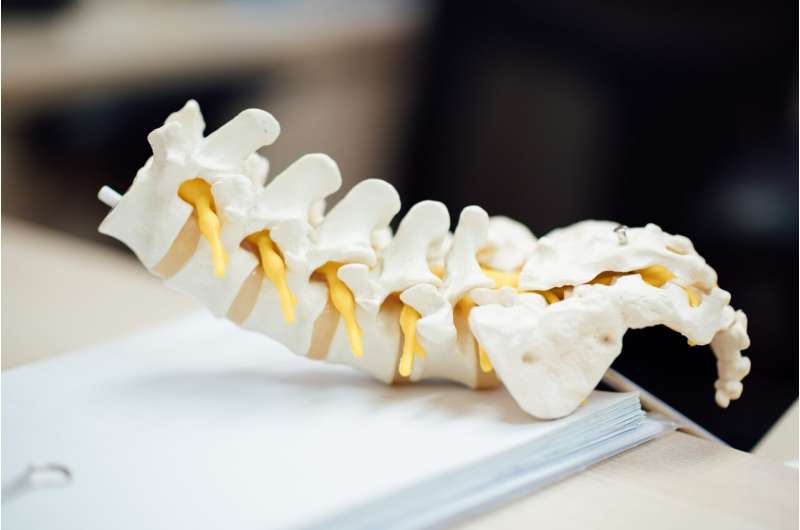Study reveals risk factors for spinal deterioration in r-axSpA


Axial spondyloarthritis (axSpA) is a chronic inflammatory rheumatic musculoskeletal disease that predominantly affects the axial skeleton. axSpA is an umbrella term that comprises the whole spectrum of patients with and without radiographic sacroiliitis, and joint ASAS/EULAR recommendations were published in 2022.
Radiographic sacroiliitis classifies patients as radiographic axSpA (r-axSpA) and those patients are at risk of spinal ankyloses. High disease activity has previously been linked to accelerated radiographic spinal progression in patients with early axSpA, but more information is needed.
Work presented at the 2025 annual EULAR congress in Barcelona describes a potential set of predictors for spinal progression, based on data collected over 13 years in 176 patients with r-axSpA. Patients fulfilling the modified New York criteria for r-axSpA (previously termed ankylosing spondylitis) were included in this longitudinal study, and everyone was examined at baseline, and then again at 5 and 13 years. Spinal radiographs were graded according to the modified Stoke AS Spinal Score (mSASSS), and predictors for continuous change were assessed over various time periods.
Of the 176 patients included at baseline, 166 and 136 were assessed at the 5- and 13-year follow-up respectively, and 126 participated on all three occasions. Over time, there was a significant increase in spinal ankylosis (mSASSS), with a mean increase of 1.6 points from baseline to 5 years, and 2.7 from 5- to 13-year follow-up—reflecting a yearly average increase in mSASSS of 0.29 and 0.34, respectively. Sex-stratified analyses showed significant increases in both males and females.
Several factors were flagged as being significant associations when the researchers looked for predictors of progression. For example, higher C-reactive protein and being overweight or obese predicted progression in both sexes. Higher mSASSS at the start of follow-up and exposure to tumor necrosis factor inhibitors (TNFi) or bisphosphonates were associated with progression in females, whereas smoking and carrying the HLA-B27 gene were significant predictors in males.
Anna Deminger, lead author for the study, said “On a group level, the progression in spinal pathological new bone formation was slow but continued over 13 years in patients with long-standing r-axSpA.”
This study highlights the importance of inflammation as a negative prognostic marker for spinal radiographic progression. Other modifiable adverse prognostic markers were smoking and having a body mass index over 25. Of note, the higher risk of spinal radiographic progression in women exposed to TNFi or bisphosphonates needs to be further investigated.
More information:
Deminger A, et al. Predictors of spinal radiographic progression over up to 13 years in patients with radiographic axial spondyloarthritis. Presented at EULAR 2025; OP0314. Ann Rheum Dis 2025; DOI: 10.1136/annrheumdis-2025-eular.B2838
Provided by
European Alliance of Associations for Rheumatology (EULAR)
Citation:
Study reveals risk factors for spinal deterioration in r-axSpA (2025, June 13)
retrieved 14 June 2025
from https://medicalxpress.com/news/2025-06-reveals-factors-spinal-deterioration-axspa.html
This document is subject to copyright. Apart from any fair dealing for the purpose of private study or research, no
part may be reproduced without the written permission. The content is provided for information purposes only.
If you liked the article, do not forget to share it with your friends. Follow us on Google News too, click on the star and choose us from your favorites.
If you want to read more Like this articles, you can visit our Science category.